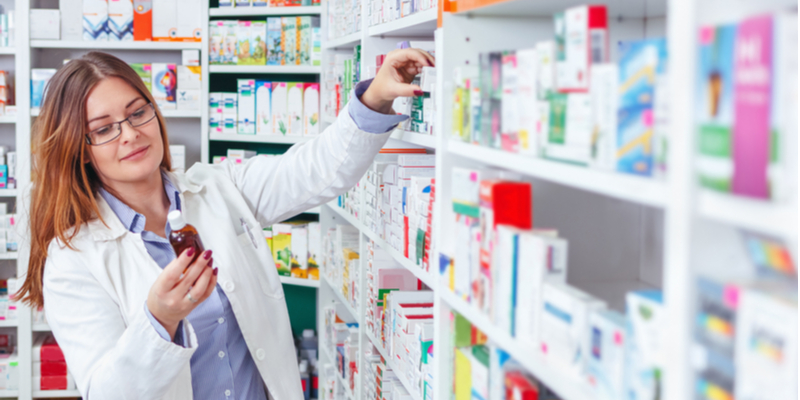Pharmacy temperature monitoring is incredibly important to protect the patients you serve, as well as the products stored in your care. Pharmacy refrigerators and freezers must be temperature monitored and optimized for the storage of refrigerated and frozen medications. In addition, non-refrigerated medications must be kept in a temperature-monitored environment that is optimized for food safety.
Refrigerated and frozen pharmaceutical storage temperatures are a good indicator of the overall safety and effectiveness of medications on hand. Automatic temperature monitoring is the easiest way to ensure that temperatures are always at the proper levels and do not fall below or exceed the recommended storage conditions. The best systems offer an alarm system that’ll send a message or sound an alarm when temperatures fall beyond optimal limits. That way, staff can instantly take action to alter temperatures so that they fall within the recommended levels.
While some medications are kept in a fridge or freezer, such as injectable drugs, many others are not. It’s important that temperatures are carefully monitored in all areas throughout the pharmacy for this reason. This reduces product waste and ensures that drugs are available right when patients need them.
CDC Guidelines for Pharmacy Temperature Monitoring
According to the CDC (Centers for Disease Control), the end-all goal of temperature monitoring is to preserve the safety and efficacy of medications. Many temperature-dependent medications cost a great deal of money – some in the tens of thousands of dollars. If these medications spoil it is cost prohibitive to pharmacies. Therefore, it is always more affordable to be proactive about temperature monitoring. In fact, a solid system offers many financial benefits by pinpointing temperature issues right away before product loss has a chance to take place.
The CDC recommends storing vaccines in a precise manner with certain policies and procedures in place for temperature monitoring. At the very least, temperatures should be monitored and recorded two times each day. Temperature recordings should be reviewed throughout the day – at least once in the morning and once at the end of the day.
Digital data systems are ideal for storing and recording temperature information over 24-hour periods. As a result, you have a detailed record of temperature control at all hours of the day. This log of information is best kept right outside of the refrigerator or freezer so that it’s easy for all personal to review. This same process should be utilized even if alarm systems are in place to detect a rise or fall in temperatures.
If a temperature recording is missed, it should be left blank for that day. It’s also important to record any power outages, mechanical issues, or repairs – regardless if the temperature range is impacted or not.
Additional Tips for Optimal Pharmacy Temperature Monitoring
Don’t forget about monitoring the temperature of medications kept outside of the fridge and freezer – these temperatures matter too.
Make sure refrigerator and freezers have self-closing doors with an alarm programmed to go off if doors are left open.
If you notice that temperature readings never change, check the unit to ensure it is working correctly. It is normal for temperatures to vary, not so normal for them to always stay the same.
The most accurate tool for measuring temperature is a buffered probe.
Cooling Power Can Help
Cooling Power offers a variety of equipment rentals to help maintain pharmacy temperatures no matter what – even in a power outage. From cooling power equipment to generators and other power equipment rentals for use in a natural disaster or major power outage, we’ve got you covered. Contact us today to learn more.

